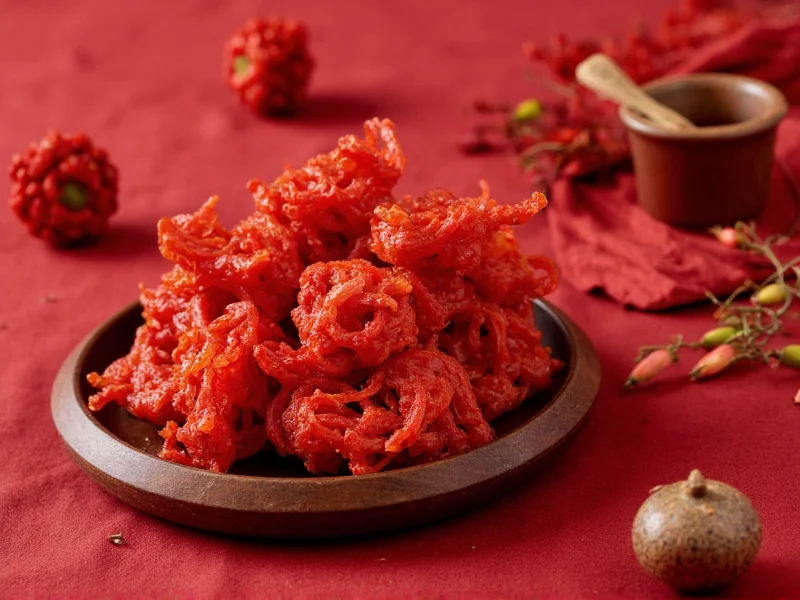When exploring authentic Chinese regional cooking, understanding the difference between Hunan and Szechuan cuisine proves essential for both culinary enthusiasts and casual diners. These two prominent Chinese culinary traditions often get confused due to their shared emphasis on bold flavors, yet they represent distinctly different approaches to spice and flavor composition rooted in their respective geographical regions.
Geographical Origins and Cultural Context
Hunan cuisine originates from China's Hunan province, located in south-central China near the Yangtze River basin. Known as Xiang cuisine after the Xiang River, this cooking style developed in a humid region where locals traditionally used spicy ingredients to combat dampness. Sichuan cuisine, or Chuan cuisine, comes from China's Sichuan province in the southwestern region, characterized by its misty climate and mountainous terrain. The distinctive ma-la (numbing-spicy) profile evolved as a response to this environment.
Flavor Profile Comparison
The fundamental difference between Hunan and Szechuan cuisine lies in their approach to heat and flavor complexity. Hunan cooking emphasizes straightforward heat from fresh red chilies combined with sour elements like vinegar and pickled ingredients. Sichuan cuisine, by contrast, creates a more complex sensory experience through the combination of dried chilies, garlic, ginger, and the signature Sichuan peppercorns that produce that unique tingling sensation.
| Characteristic | Hunan Cuisine | Sichuan (Szechuan) Cuisine |
|---|---|---|
| Primary Heat Source | Fresh red chilies | Dried chilies + Sichuan peppercorns |
| Signature Sensation | Direct, immediate heat | Ma-la (numbing-spicy) sensation |
| Flavor Complexity | Simpler profile with prominent sour notes | Complex layers: sweet, sour, salty, umami |
| Oil Usage | Moderate | Heavy ("floating oil" technique) |
| Signature Ingredients | Fermented black beans, smoked meats | Doubanjiang (fermented bean paste), Pixian chili bean sauce |
| Texture Focus | Fresh, crisp vegetables | Variety of textures in single dish |
Cooking Techniques and Signature Dishes
Hunan cooking often features stir-frying, steaming, and smoking techniques that preserve ingredient freshness. Signature Hunan dishes include Steamed Fish Head with Chopped Red Peppers (Duo Jiao Zheng Yu), which showcases the cuisine's fresh chili heat, and Hunan Smoked Pork, highlighting preservation techniques developed in the region.
Sichuan cooking employs techniques like dry-frying (gan bian), quick-boiling (shui zhu), and the famous "bobbing" method. Iconic Sichuan dishes include Kung Pao Chicken (Gong Bao Ji Ding), which balances sweet, sour, and spicy elements with peanuts, and Mapo Tofu, featuring the signature ma-la sensation with minced meat and tofu.
Spice Level Comparison: Hunan vs Szechuan
When considering which is hotter between Hunan and Szechuan, the answer depends on how you define "hot." Hunan cuisine generally delivers a more direct, immediate heat from fresh chilies that registers higher on the Scoville scale. Sichuan heat, while potentially intense, is tempered by the numbing effect of Sichuan peppercorns, creating a different sensory experience rather than pure capsaicin burn.
For those exploring authentic Chinese regional cooking, understanding these distinctions helps navigate restaurant menus and cooking techniques. The difference between Hunan and Szechuan cuisine extends beyond simple heat levels to encompass entirely different philosophies of flavor composition and sensory experience.
Choosing Between Hunan and Szechuan
When deciding between Hunan and Szechuan dishes, consider your tolerance for different types of heat. If you prefer straightforward, fiery heat with sour accents, Hunan cuisine might suit you better. Those who enjoy complex flavor layers with the distinctive tingling sensation will likely prefer Sichuan cooking. Many authentic Chinese restaurants now specify regional origins on their menus, making it easier to select dishes matching your preferences.
Authentic Preparation Considerations
True Hunan cooking emphasizes fresh ingredients, particularly seasonal vegetables and meats, with less reliance on processed sauces. Authentic Sichuan preparation requires proper toasting of Sichuan peppercorns to release their aromatic oils without bitterness. Understanding traditional Sichuan cooking techniques reveals why many Westernized versions miss the nuanced balance of authentic regional Chinese cuisine.
FAQ
What's the main difference between Hunan and Szechuan cuisine?
The primary difference lies in their approach to heat and flavor. Hunan cuisine uses fresh red chilies for direct, immediate heat with prominent sour notes, while Sichuan cuisine features the distinctive ma-la sensation (numbing-spicy) from Sichuan peppercorns combined with complex layers of sweet, sour, and savory flavors.
Which is hotter, Hunan or Szechuan food?
Hunan food generally delivers more direct, immediate heat from fresh chilies, while Sichuan heat is characterized by the numbing-spicy ma-la sensation. Though both can be extremely spicy, Hunan dishes often register higher on pure heat intensity scales, while Sichuan spice includes the distinctive tingling sensation from Sichuan peppercorns.
Does Szechuan cuisine always contain Sichuan peppercorns?
Authentic Sichuan cuisine almost always includes Sichuan peppercorns, which create the signature ma-la (numbing-spicy) sensation. This distinctive ingredient is fundamental to traditional Sichuan cooking techniques and flavor profiles, though some Westernized versions may omit them.
What are classic Hunan dishes to try?
Authentic Hunan dishes include Steamed Fish Head with Chopped Red Peppers (Duo Jiao Zheng Yu), which showcases fresh chili heat, Hunan Smoked Pork highlighting traditional preservation methods, and Chairman Mao's Red-Braised Pork (Hong Shao Rou), a dish famously associated with the Hunan-born leader.
How can I identify authentic Sichuan restaurants?
Look for restaurants that specify Sichuan or Chuan on their menus, offer traditional dishes like Mapo Tofu and Kung Pao Chicken with proper ma-la balance, and use authentic ingredients like Pixian chili bean paste and properly prepared Sichuan peppercorns. Authentic establishments often feature regional Chinese decor and may offer a wide variety of traditional Sichuan dishes beyond the commonly known Westernized versions.











 浙公网安备
33010002000092号
浙公网安备
33010002000092号 浙B2-20120091-4
浙B2-20120091-4